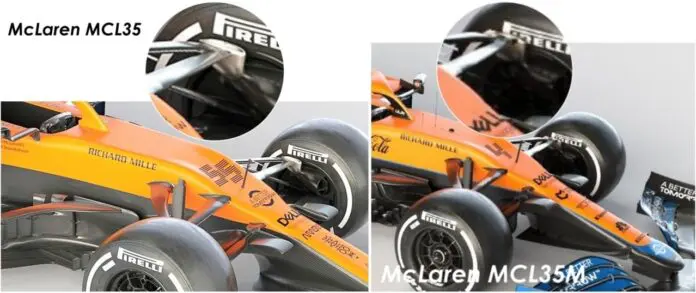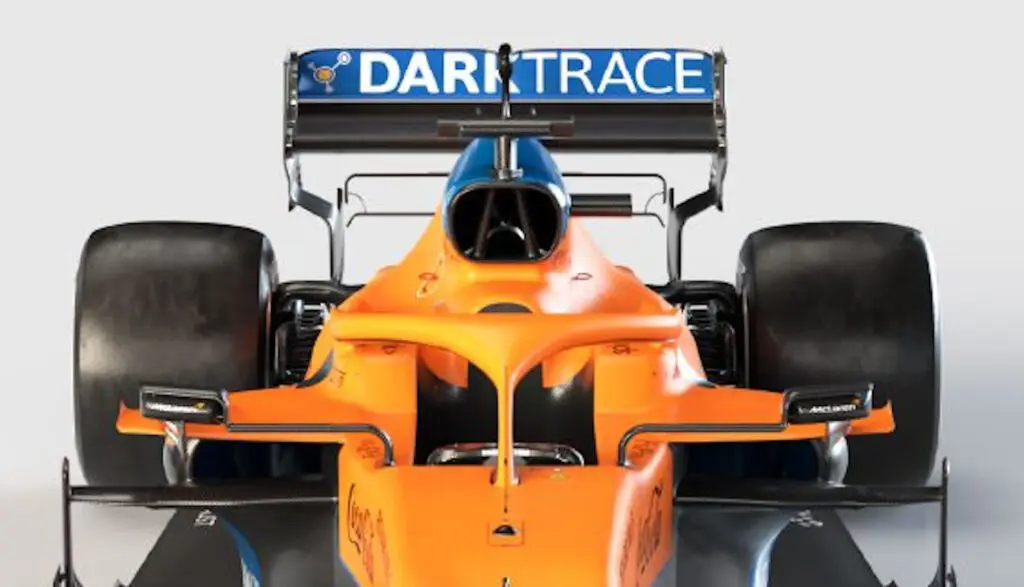McLaren MCL35M Technical Analysis: so much Mercedes in this McLaren…
A whole new car. As it was addressed in recent weeks by the management, the McLaren MCL35M is the result of hard work. With the change of supply of the power units moving on to the Mercedes engines, the historic British team was able to take advantage of the clause present in the 2021 technical regulation. Upon notice, the paragraph 22.08.06 allows further modifications to the car in order to give the team the possibility to integrate the new component in the best possible way. The changes to “adapt” the car to the German engine therefore involved changes to the chassis, cooling system, part of the electronics, gearbox and rear suspension. All this has necessarily “upset” the project and approach to work. Logically, analyzing the exquisitely sporty aspect, the opportunity to make a leap in performance ahead of the opponents is certainly tempting, considering the different areas where the Woking technicians were able to work to strengthen the already good competitiveness of the MCL35.
McLaren MCL35M technical analysis: front end
From the very first images released through the online presentation of the latest born in McLaren, we note how the nose is almost similar to the one homologated last season, used on rare occasions during qualifying and the race. Compared to the 2020 version, the “tip” of the nose has been further tapered. The aerodynamic philosophy therefore remains the same, favoring the passage of air externally to the supporting pylons. By channeling the flow below and to the sides of the nose, its management is delegated directly to the front wing and the Mercedes style slides. In fact, you can see from the image above how the MCL35M continues to use the classic “fangs” in the initial part of the nose. These aerodynamic components replace the turning vanes as conveyors useful to channel the flow directed towards the bargeboards. These solutions actually increase the downforce by compensating for the pressure loss generated by the front wing, which is quite unloaded to obtain an outwash effect.
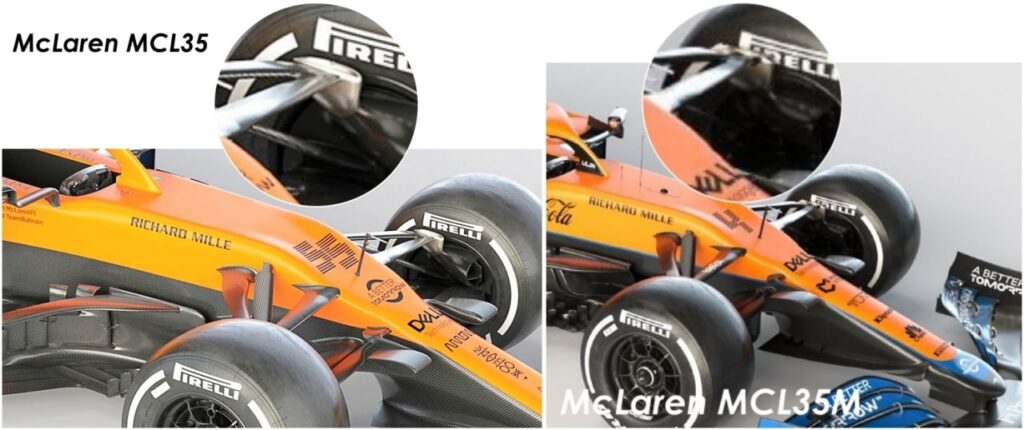
The front suspension has been further taken to the extreme for aerodynamic reasons. Front push rod has been confirmed. The rocker is very lean forward and enters the frame in a rather high area. Looking at the image, we notice how the mechanical side has been put at the service of aerodynamics to try to achieve the greatest possible flow cleanliness. Also confirmed the solution with the “pivot”, now used by most of the Formula 1 teams. It will be really interesting to see how this new suspension will behave with the new Pirelli front compounds which, last season, were rather difficult to bring in the right window of operation.
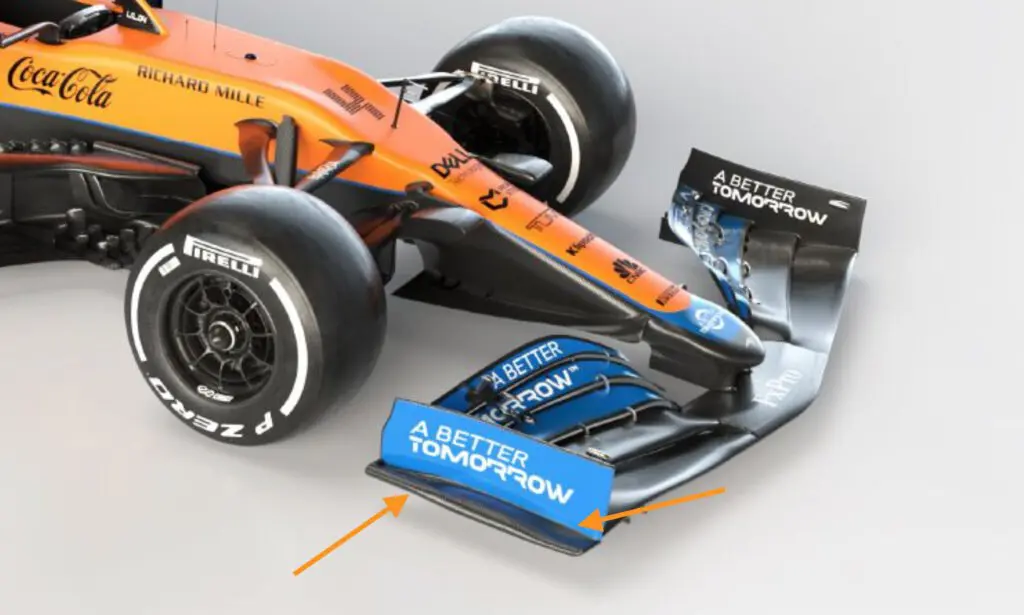
A small change on the sidewalk outside the front wing endplates has to be noted. The new spec features a more arched shape, which is clearly inspired by the version seen on last season’s Red Bull RB16.
McLaren MCL35M technical analysis: central area
The lowered position of the upper anti-intrusion cone has been confirmed for 2021 too. The cooling inlet of the radiators, which remained positioned at the top, has been further reduced as has the recess in the lower part, now much more extreme than the one on the 2020 car. This factor will undoubtedly help the Woking aerodynamicist to carry a greater flow of air towards the rear area of the car, useful for the generation of downforce.

The configuration of the rear-view mirrors, although with some minor changes, remains that of the past season, moreover, adopted by most of the Circus. Faired and “blown”, the mirrors are connected directly to the cockpit with a support, now in a lower position, connected directly to the appendix positioned at ninety degrees on the bridge flow diverter of the sidepods. The very simplified version of the bargeboards will probably be replaced by the official one at the first appearance on the track.
The Airscope is also very similar to the specific seen on last year’s W11. Compared to the 4 elements present on the MCL35, we now have only three distinct inputs, which power the compressor and the cooling of the hybrid system. It is easy to understand how the Mercedes cooling and fuel system is different from the Renault Power Unit.
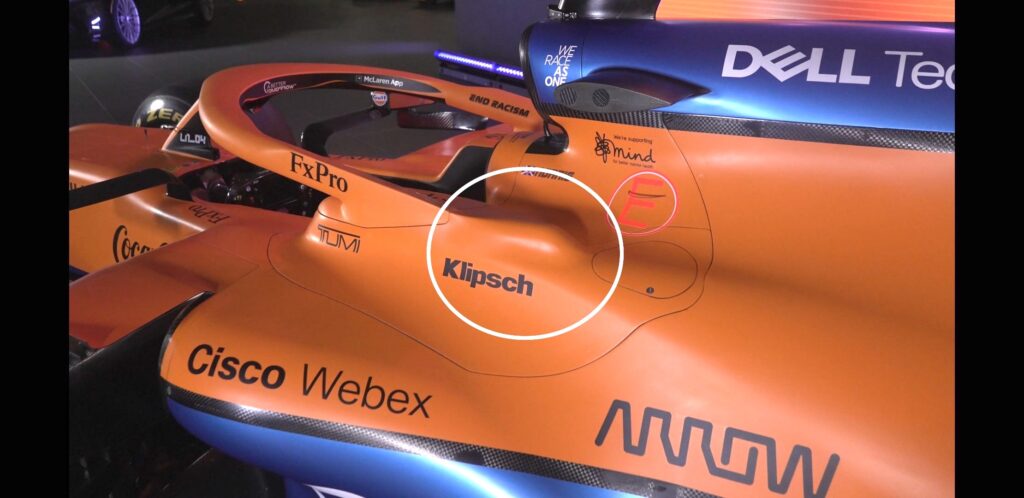
qually interesting is the “bulge” that appeared in the area where the Halo attaches to the chassis. In this area, where are usually positioned some open vents, a radiator is probably hiding. It could be part of the cooling for the hybrid system or it could be used in order to lowering the operating temperatures of the batteries.
McLaren MCL35M Technical Analysis: rear axle
Undoubtedly, the most important change that can be appreciated on the latest addition to McLaren concerns the sidepods. The design has been taken to the extreme compared to the 2020 car, finding a perfect positioning of the elements under the hood that is really excellent. Thanks to the German power unit, the British team follow the lines taken by Mercedes with the W11.

Moving towards the rear of the car, analyzing the stairway floor, we see how it reflects the new 2021 regulation to the letter. The portion of floor in front of the rear wheels has been reduced and slots and slits have disappeared. This fact worsens the aerodynamic performance of the car, decreases the seal and complicates the control of the “tire squirt”. It must be remembered that the reduction of the bending of this element has been reduced to a maximum range of 2 mm. The double-pylon solution with the gooseneck to support the rear wing is also confirmed.
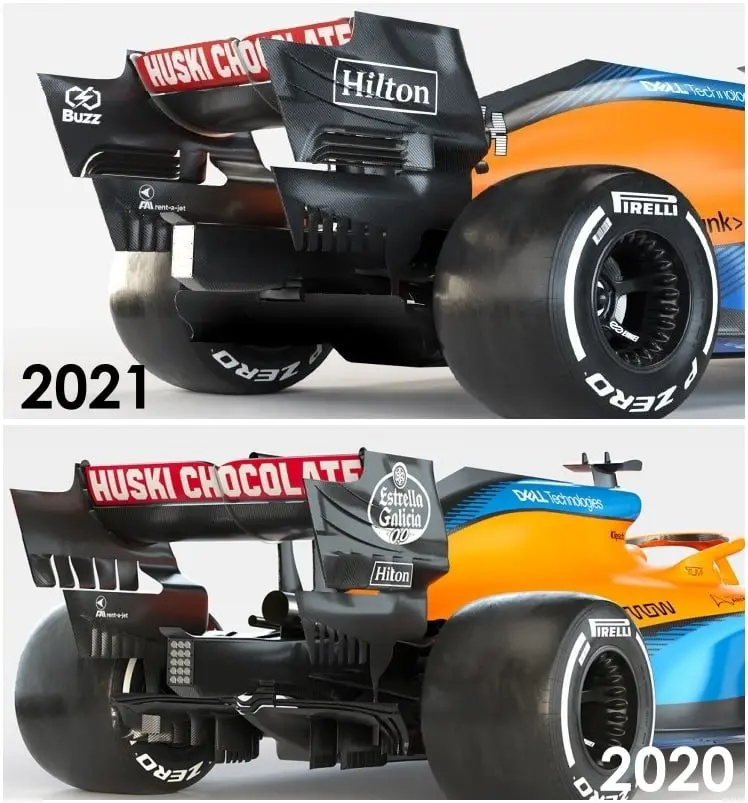
The rear wing endplates are much more worked than those seen at last year’s presentation, further revised than those used during the season. The different blowholes in the central area, also these Red Bull school, were created to try to increase the pressure difference between the belly and the back of the wing itself, with the clear intention of maximizing the aerodynamic load. The diffuser was deliberately kept hidden so as not to give information to the comeptitors. This part of the cars has also undergone regulatory changes, with the aim of decreasing downforce. Only during the first tests we will be able to see the solutions found by the team headed by James Key.
Authors: Alessandro Arcari – @berrageiz – Cristiano Sponton – @csponton
English translation by Niccoló Arnerich – @niccoloarnerich

